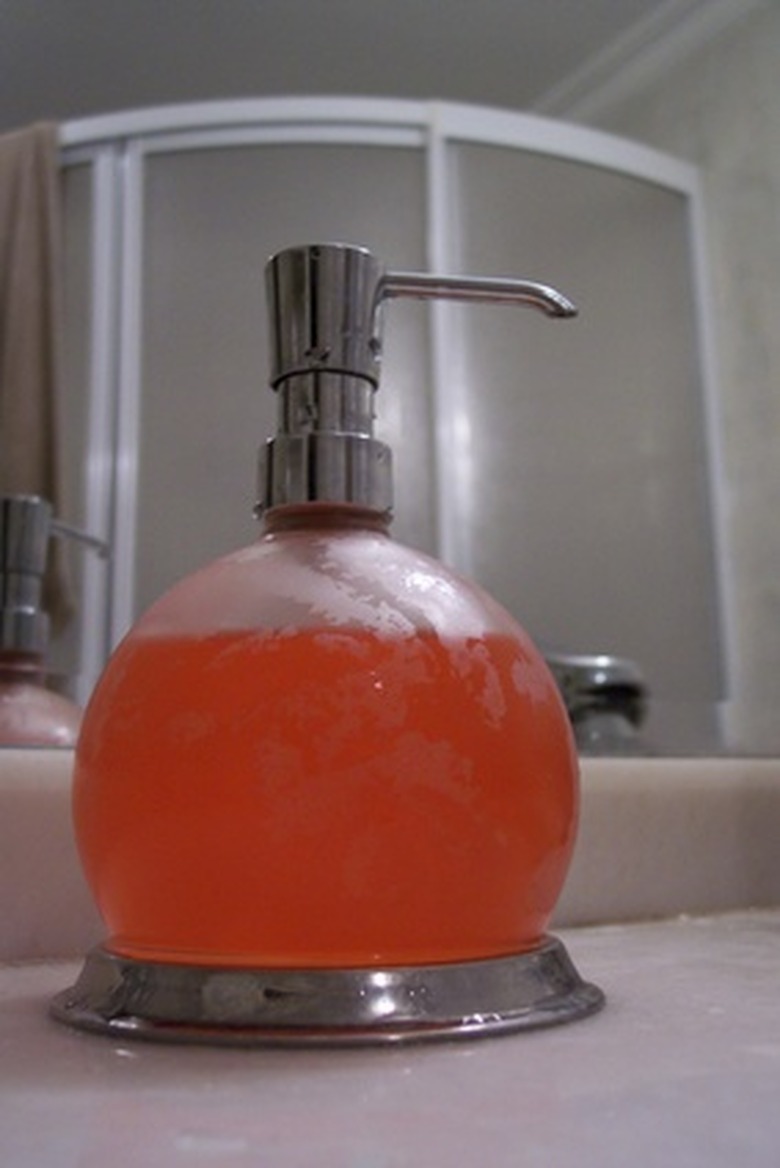Insecticidal Soap Ingredients
Insecticidal soap is a classic organic product used to kill or deter many types of insects on plants. From aphids to mealy bugs, insecticidal soap is effective in keeping populations of bothersome insects under control, although it rarely succeeds in eliminating all insects. It's easy to make homemade insecticidal soap with mild dishwashing liquid and water. Or you can purchase this insect killer at nurseries and garden departments.
Potassium Salts
Potassium salts of fatty acids comprise a percentage of typical commercial insecticidal soaps. For example, the Garden Safe product contains just 1 percent of this chemical and 99 percent inert ingredients. However, Safer's Insecticidal Soap contains 50 percent potassium salts of fatty acids.
- Insecticidal soap is a classic organic product used to kill or deter many types of insects on plants.
- From aphids to mealy bugs, insecticidal soap is effective in keeping populations of bothersome insects under control, although it rarely succeeds in eliminating all insects.
Inert Ingredients
Because the active ingredients in commercial insecticidal soaps are very strong, they must be diluted in order to prevent plants from getting burned. In addition to potassium salts of fatty acids, insecticidal soaps can contain other active ingredients, including neem oil and other essential oils believed effective in killing insects. However, insecticidal soaps also include such inert ingredients as water, potassium oleate, lauric acid, glycerin and glycerin monostearate–these ingredients are in EcoBlend Organic Insecticidal Soap, which is approved for use on certified organic farms.
Surfactants
Wetting agents called surfactants are often contained in commercial insecticidal soap formulas. Surfactants help plants to better absorb products such as insecticidal soap that you spray on them. They prevent runoff and evaporation as well. Some wetting agents, such as those in Agri-2, contain biodegradable, nontoxic, phosphate-free, non-ionic surfactants, which assist the product in giving plants uniform coverage and wetting.
- Because the active ingredients in commercial insecticidal soaps are very strong, they must be diluted in order to prevent plants from getting burned.
- However, insecticidal soaps also include such inert ingredients as water, potassium oleate, lauric acid, glycerin and glycerin monostearate–these ingredients are in EcoBlend Organic Insecticidal Soap, which is approved for use on certified organic farms.
Essential Oils
Some insecticidal soap products contain essential oils and other oils, such as canola. One product, called Indoor Pharm, contains essential oil of rosemary, vanilla oil and food grade oils, which act to kill insects without relying on its glycerin soap. The soap is used as a carrier for the essential oils and other oils, including cottonseed, which is effective in controlling mites.
Neem
The neem tree is from India and its oil is popular among organic gardeners as a natural insect killer. Bon-Neem Insecticidal Soap is a water-based formula of potassium soaps from the neem tree and other plant sources. Its claims include killing mites, earwigs, flea beetles, aphids, cabbageworms, leafhoppers, mealy bugs and other insects upon contact. This product contains 25 percent of potassium salts of fatty acids that are derived from neem seed oil and 75 percent inert ingredients.
- Some insecticidal soap products contain essential oils and other oils, such as canola.
- One product, called Indoor Pharm, contains essential oil of rosemary, vanilla oil and food grade oils, which act to kill insects without relying on its glycerin soap.
